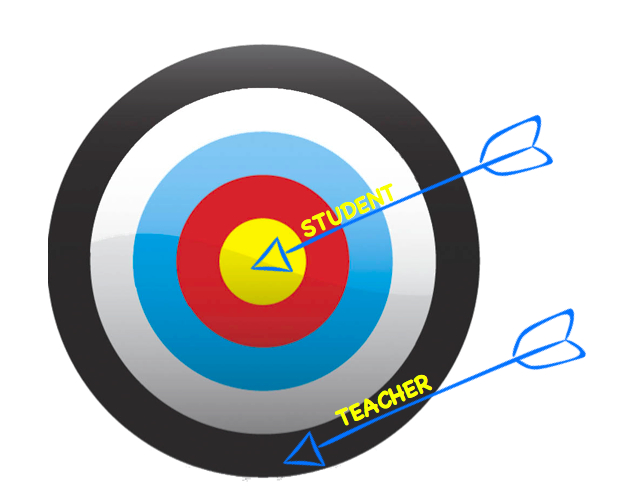I am not anti-direct instruction, my mother always told me, “everything in moderation” and I apply this to my teaching strategies as well. Afterall, DI can be a highly effective means of delivering information such as instructions or foundational content quickly in order to buy time for students to do the work. And for me, that’s the role of DI, it enables me to get to where my students do (emphasis on the “do”) the really cool stuff. The really cool stuff by definition is student-centered, almost always relies on the use of technology, and would be pretty challenging to accomplish without a little metacognition happening at the same time. I’m pretty sure that’s a triple threat, and if I get excited about twofers, we can assume a win-win-win puts me in the seventh ring of teacher ectasy.
So here are three tricks for integrating technology to put students the center of their learning: 1. Making connections to course content: I’m old school, so Bloom’s Taxonomy lives in my brain and I can’t help but want my student to reach those top levels including synthesis, evaluation and analysis. I think the process of making a connection between two concepts is an excellent example of higher order thinking. Let’s say I previously taught about virus and bacterial structure and now several months later I’m in the ecology unit. I ask my students to hunt down a podcast that connects those two concepts. The first time I do this, I identify the concepts I want linked in a single podcast, after students build experience I let them identify the concepts linked in their selected podcast. See what I did there? Scaffolding metacognition. Students get to explore course topics that peak their interest, practice using research and internet search skills (I explicitly teach these skills early in the year), and get to communicate their findings with peers. We curate the podcast links with a student generated summary of the rationale for selection in a google doc allowing me to assess their evaluation and analysis while permitting other students to access links that interest them. Some of these podcasts become part of my permanent link collection because they are so on point! 2. Exit slips the new-fashioned way: Are you still using slips of paper or post-it notes for exit slips? Get on the google slide train instead. I start a new google presentation with a question or instruction (give a brief summary of viral structure, identify two things you learned today, ask me a question about something you didn’t understand today, how do viruses infect host cells, why do viruses infect host cells, etc.) and then share the document at the end of class. Students add a slide with their name and answer in just 2-3 minutes. I have a single document to review and students can see how other students are thinking – there’s that metacognition thing again. You could make this even more student-centered by having your students create the exit question, maybe taking turns, you might learn a lot about their understanding! 3. Put the spoon down and stop feeding information: I get so excited when my students ask questions in class that without even thinking I launch into a tangent to answer it. Afterall, whatever topic we’re working on is so engaging my students are asking questions, oh my gosh, jump and down, I don’t want to disappoint them! The hardest thing I have been trying to teach myself, is to stop answering student questions and instead make them find the answer, you know using that crazy new-fangled thing called a search engine and then evaluating the quality of the source? So I started pausing class to have students do just that, big mistake, we lost precious minutes of class and some students would lose interest or get distracted while waiting, or frankly, just weren’t that interested in the question. Now when a student asks a question that isn’t directly tied to the lesson or for whatever reason I cannot take the time in that moment, we create a google doc. You can offer an extra homework grade to students who answer and document the question(s), or you can use them as bonus questions on a quiz/test, or maybe they inspire a research project for that unit. I hope these ideas help and/or inspire you to get students thinking and doing in your classroom because if they are doing than chances are good they are thinking!
14 Comments
|
AuthorKerryane Monahan is a forever student, teacher of teachers, adventure-obsessed science educator who writes about science, education, leadership, teacher problems, student problems, curriculum, successes and anything else that skitters through her brain. Archives
October 2015
Categories |
Proudly powered by Weebly

 RSS Feed
RSS Feed